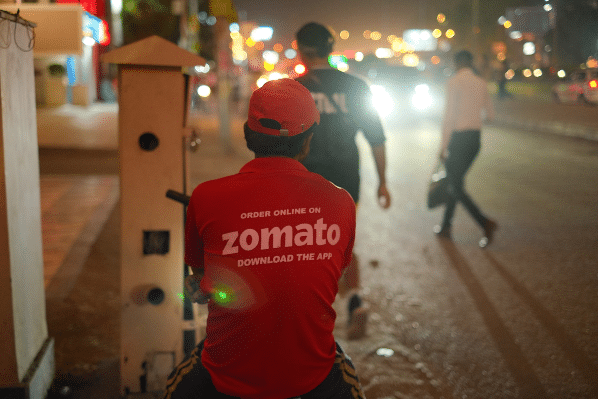
In a blog post Indian food delivery company Swiggy said that it turned profitable in March. The announcement came a day ahead of the earnings release of its listed peer Zomato.
In the post, Swiggy’s co-founder Sriharsha Majety said that the company’s food delivery turned profitable after accounting for “ALL corporate costs,” but excluding employee stock awards.
Notably, most listed companies provide adjusted earnings after excluding stock awards – a practice that Berkshire Hathaway chairman Warren Buffett has criticized.
Meanwhile, when it comes to startups like Swiggy turning profitable after excluding employee stock options is also no mean achievement.
Majety also highlighted it as an achievement and said “this is a milestone for food delivery globally, not just for us, as Swiggy has become one of the very few global food delivery platforms to achieve profitability in less than 9 years since its inception.”
Excited that Swiggy turned its food delivery business profitable in March'23, while creating value for all our partners. Our teams have worked tirelessly to build long term value putting customers first each day. Read more HERE…https://t.co/yKAKP7muHD
— Sriharsha Majety (@harshamjty) May 18, 2023
Notably, among global delivery companies, DoorDash – which is of a similar vintage as Swiggy – reported a net loss of $640 million in the fourth quarter of 2022. Deliveroo is also posting losses while Uber said that in Q1 2023 its delivery business reported an adjusted EBITDA of $30 million on $2.51 billion of revenues.
However, Uber’s mobility business reported an adjusted EBITDA of $618 million on similar revenues.

At its annual Get-go event in New York yesterday, Uber unveiled several new features including letting customers book a cab through a phone call.
- Read our guide on buying Uber stock
Uber sold its Indian food delivery business to Swiggy’s rival Zomato and took an equity stake in the company – a playbook it has adopted in several loss-making markets.
Swiggy Turns Profitable, What About Zomato?
Zomato’s food delivery business posted a positive adjusted EBITDA margin of 0.3% of its GOV (gross order volume) in the December quarter. The business is however quite further from posting net profits.
However, like Swiggy, Zomato’s grocery delivery business is also posting massive losses.
Zomato believes that by the end of this decade, it would post annual profits of $1 billion and the company would have a $100 billion market cap – which is not cheap by any means of imagination.
Zomato has lost over half its market cap amid the market slump – so has Swiggy – with Invesco marking down the valuation from $10.7 billion to $5.5 billion over the last year.
- Read our guide on investing in startups
Notably, in order to cut losses both Swiggy has Zomato have lowered their expenses and also resorted to layoffs. The latter even exited some markets in a bid to cut down on the losses.
Swiggy’s Grocery Delivery Business Moving Towards Positive Contribution
Meanwhile, commenting on the grocery delivery Instamart business, Swiggy said that it made “disproportionate investments in Instamart given the attractiveness of the consumer proposition and its strategic importance to us.”
It however, said that the investments in the business have peaked and “we’ve also made strong progress on the profitability of the business and we’re on track to hit contribution neutrality for this 3-year-old business in the next few weeks.”
Meanwhile, what might compound the troubles for Zomato and Swiggy is the creation of ONDC (Open Network for Digital Commerce) by an Indian government arm.
While some analysts don’t see ONDC as an imminent threat to Swiggy and Zomato these are still early days as the Indian government looks to break the emerging duopolies in multiple industries – including food delivery.
Related stock news and analysis
- How to Buy Stocks in India – Regulated Stock Brokers Reviewed
- Best Future Crypto Coins to Buy in 2023
- Goldman Sachs: AI Could Enhance S&P 500 Earnings by 30% in 10 Years
What's the Best Crypto to Buy Now?
- B2C Listed the Top Rated Cryptocurrencies for 2023
- Get Early Access to Presales & Private Sales
- KYC Verified & Audited, Public Teams
- Most Voted for Tokens on CoinSniper
- Upcoming Listings on Exchanges, NFT Drops